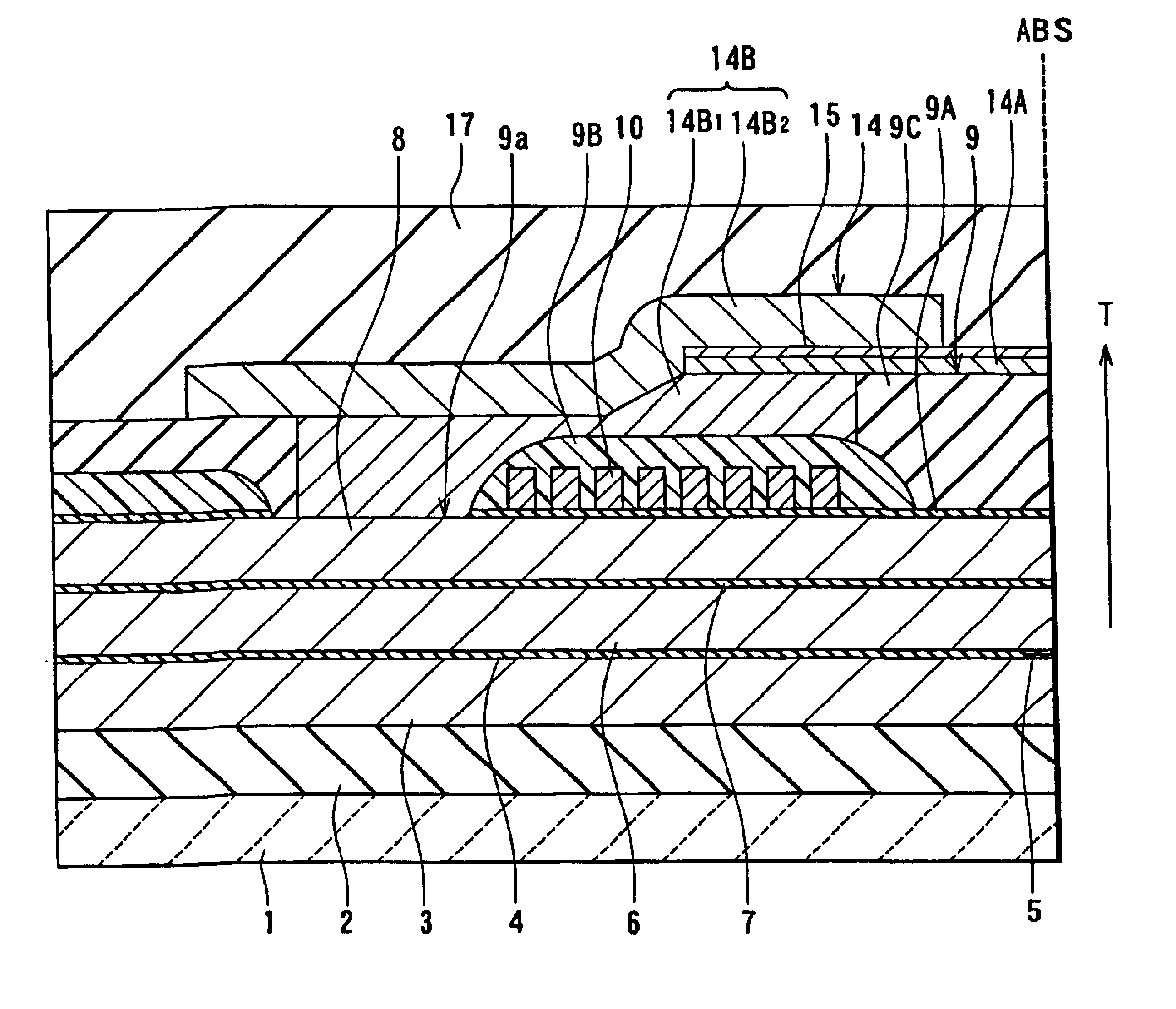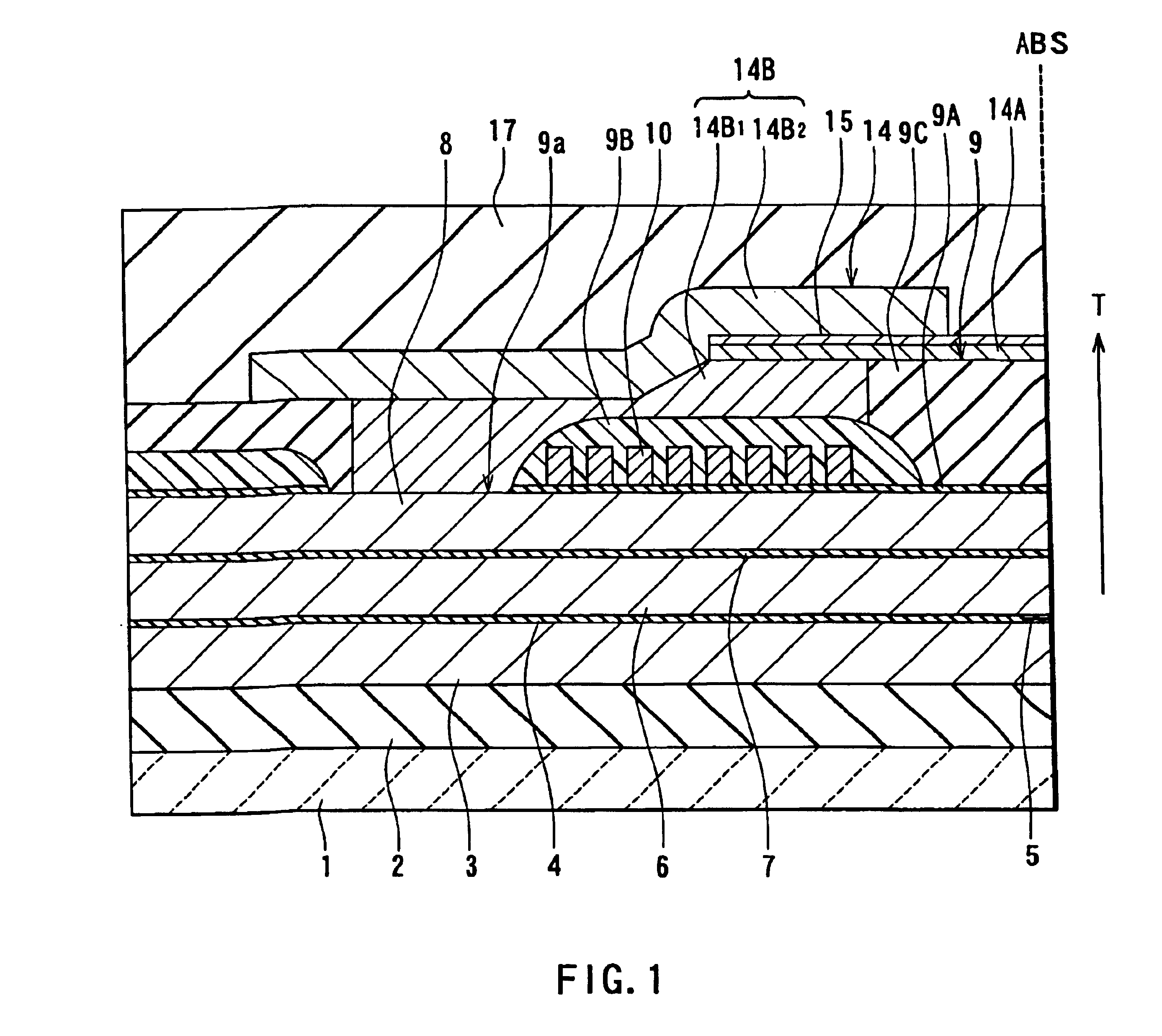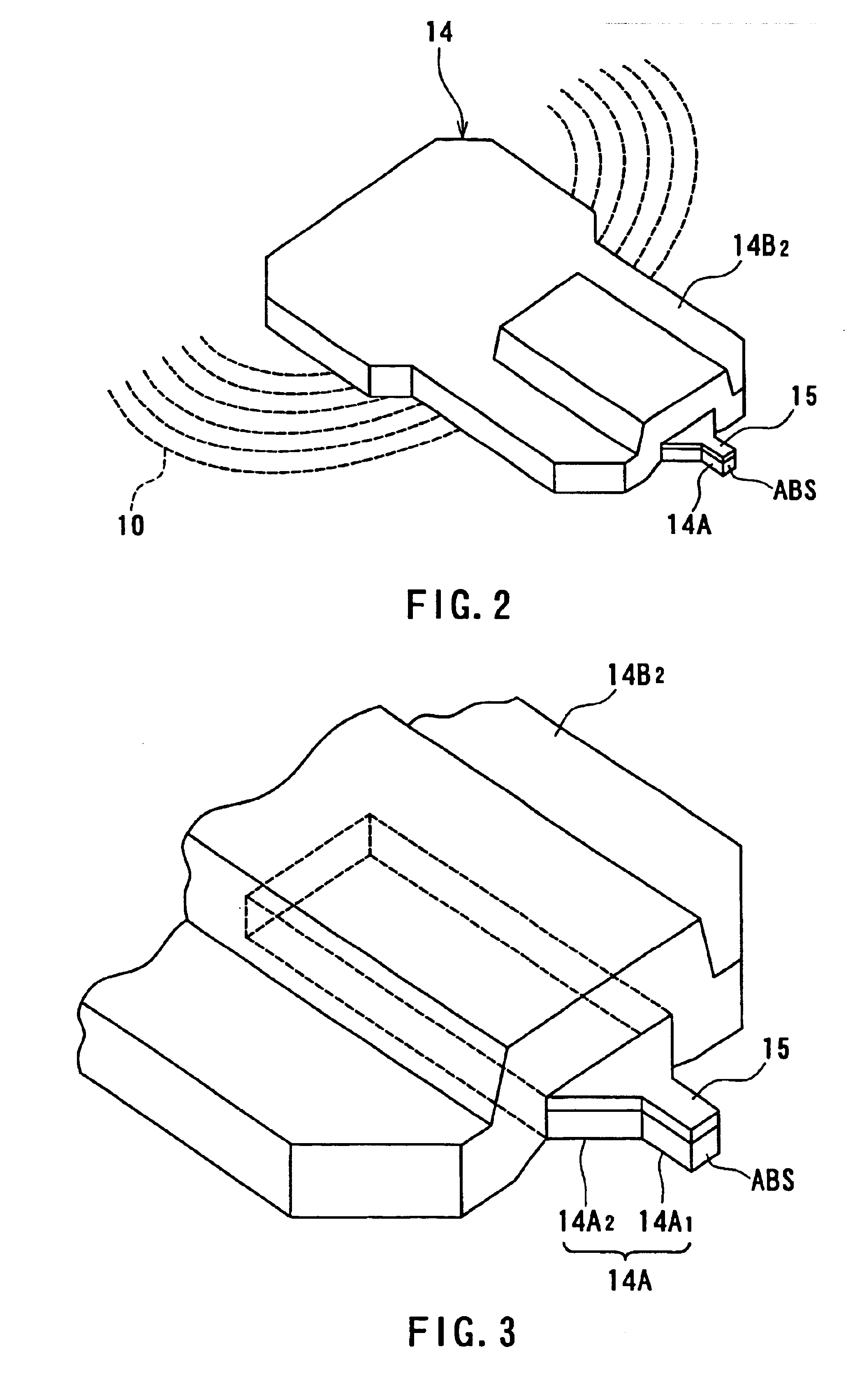Thin-film magnetic head and method of manufacturing same
a thin-film magnetic head and manufacturing method technology, applied in the direction of metal sheet core heads, instruments, nanoinformatics, etc., can solve the problems of difficult to increase the linear recording density, one of the thin-film magnetic heads disclosed in the aforementioned publications is vulnerable to curving at the edge opposite to the gap portion of the magnetic pole portion, etc., to improve the high-frequency characteristics, reduce the length of the magnetic path, and increase the intensity of the magnetic field
- Summary
- Abstract
- Description
- Claims
- Application Information
AI Technical Summary
Benefits of technology
Problems solved by technology
Method used
Image
Examples
first embodiment
[First Embodiment]
[0138]A thin-film magnetic head according to a first embodiment of the invention will now be explained with reference to FIGS. 1 to 5. FIG. 1 is a cross-sectional view illustrating the structure of the thin-film magnetic head of this embodiment. FIG. 1 shows a cross section orthogonal to the medium facing surface and the surface of the substrate. In addition, the arrow indicated by symbol T in FIG. 1 shows the traveling direction of a recording medium. FIG. 2 is a perspective view illustrating the main part of the thin-film magnetic head shown in FIG. 1. FIG. 3 is an enlarged perspective view illustrating the vicinity of the magnetic pole portion shown in FIG. 2. FIG. 4 is a front view illustrating part of the medium facing surface of the thin-film magnetic head shown in FIG. 1. FIG. 5 is an enlarged front view illustrating the pole portion layer and the non-magnetic layer shown in FIG. 4.
[0139]As shown in FIG. 1, the thin-film magnetic head of this embodiment comp...
second embodiment
[Second Embodiment]
[0222]A thin-film magnetic head according to a second embodiment of the invention will now be explained with reference to FIGS. 23 and 24. FIG. 23 is a cross-sectional view illustrating the structure of the thin-film magnetic head of this embodiment. FIG. 23 shows a cross section orthogonal to the medium facing surface and the surface of the substrate. In addition, the arrow indicated by symbol T in FIG. 23 shows the traveling direction of a recording medium. FIG. 24 is a perspective view illustrating the main part of the thin-film magnetic head shown in FIG. 23.
[0223]In this embodiment, the first layer 14B1 of the yoke portion layer 14B is smaller in thickness than in the first embodiment. The thickness of the first layer 14B1 at the position of the contact hole 9a is equal to or less than the total thickness of the insulating layers 9A, 9B. The first layer 14B1 preferably has a thickness of 1 μm or more at the position of the contact hole 9a.
[0224]In this embod...
third embodiment
[Third Embodiment]
[0243]A thin-film magnetic head according to a third embodiment of the invention will now be explained with reference to FIGS. 37 to 38. FIG. 37 is a cross-sectional view illustrating the structure of the thin-film magnetic head of this embodiment. FIG. 37 shows a cross section orthogonal to the medium facing surface and the surface of the substrate. In addition, the arrow indicated by symbol T in FIG. 37 shows the traveling direction of a recording medium. FIG. 38 is a perspective view illustrating the main part of the thin-film magnetic head shown in FIG. 37.
[0244]In this embodiment, the top surfaces of the first layer 14B1 of the yoke portion layer 14B and the gap layer 9 are flattened together so as to form one plane. In this embodiment, the pole portion layer 14A is formed on the flattened first layer 14B1 and gap layer 9, and the non-magnetic layer 15 is formed on the pole portion layer 14A. In this embodiment, the end of each of the pole portion layer 14A an...
PUM
| Property | Measurement | Unit |
|---|---|---|
| distance | aaaaa | aaaaa |
| thickness | aaaaa | aaaaa |
| thickness | aaaaa | aaaaa |
Abstract
Description
Claims
Application Information
 Login to View More
Login to View More - R&D
- Intellectual Property
- Life Sciences
- Materials
- Tech Scout
- Unparalleled Data Quality
- Higher Quality Content
- 60% Fewer Hallucinations
Browse by: Latest US Patents, China's latest patents, Technical Efficacy Thesaurus, Application Domain, Technology Topic, Popular Technical Reports.
© 2025 PatSnap. All rights reserved.Legal|Privacy policy|Modern Slavery Act Transparency Statement|Sitemap|About US| Contact US: help@patsnap.com



